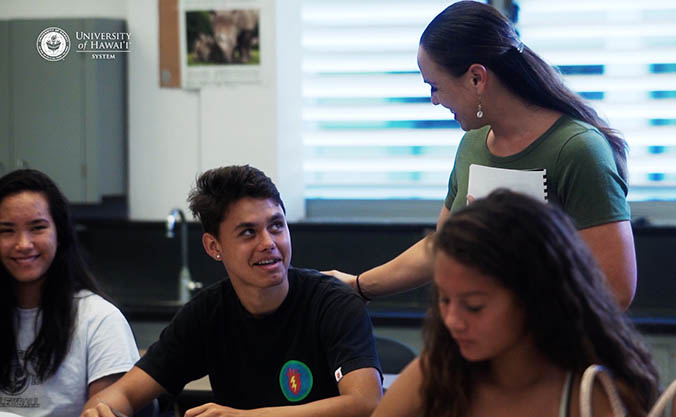
The teacher shortage in Hawaiʻi is disproportionately affecting students who live on the Waiʻanae Coast of Oʻahu and in neighbor island areas where there are large numbers of students of Hawaiian, Filipino and Pacific Islander ancestry. This is just one finding in a first of its kind research brief, Increased Teacher Compensation Can Lead to More Equitable Education in Hawaiʻi, released on Wednesday, February 26 by the Hawaiʻi Scholars for Education and Social Justice (HSESJ).
HSESJ is a volunteer group of Hawaiʻi-based researchers who conduct, review and disseminate research related to education and social justice in Hawaiʻi. The research brief by six HSESJ scholars from the University of Hawaiʻi at Mānoa, Leeward Community College and Windward Community College was based on 41 journal articles, three books, two dissertations and 35 other reports. The group used this research in education and other relevant fields to show how underfunding affects public education and how increased compensation for public school teachers can lead to more equitable education for all of Hawaiʻi’s residents.
“We reviewed local, national and international research in creating, what we feel, is the most comprehensive look at the challenges facing K through 12 public education in Hawaiʻi,” said Lois Yamauchi, one of the HSESJ researchers and a UH Mānoa College of Education professor in educational psychology. “The conclusions are clear, the only way we can achieve greater equity in public education is to provide greater support for local teacher recruitment, more financial assistance for teacher candidates in university-based training and stronger incentives that retain Hawaiʻi’s public school teachers.”
The report has been endorsed by 120 scholars in Hawaiʻi, including 94 from UH Mānoa. Other findings include:
- Hawaiʻi continues to have a large pool of interested teacher candidates, but many of the young people who initially pursue teacher education do not complete training or opt for a different profession altogether because of the financial barriers, including low teacher wages and Hawaiʻi’s high cost of living.
- Hundreds of high school students want to be teachers and 1,200 college students are currently enrolled in teacher education, however, many financial barriers prevent them from graduating and taking a teaching job.
- The chronic underfunding of Hawaiʻi’s public schools has contributed to taking multiple jobs and negatively affects the learning environment for many students.
- Each year, roughly 1,000 teachers leave their positions in Hawaiʻi’s public schools. As schools must hire 10 percent of the teacher workforce annually, these positions are mostly filled with non-licensed or emergency hire teachers, or they are left vacant.
- Research indicates that having a well-prepared and experienced teacher is related to student engagement and learning.
With important legislative initiatives currently being considered, the research brief provides important information about the current educational context. For more information, contact Lois Yamauchi at yamauchi@hawaii.edu or (808) 956-4385.

